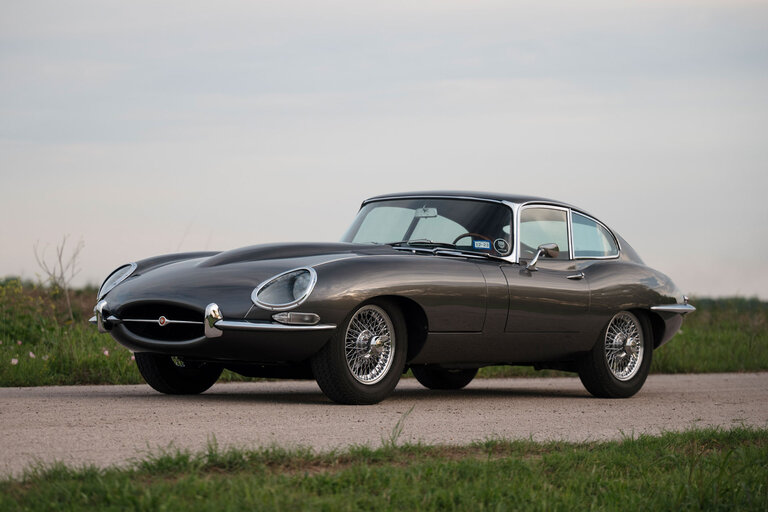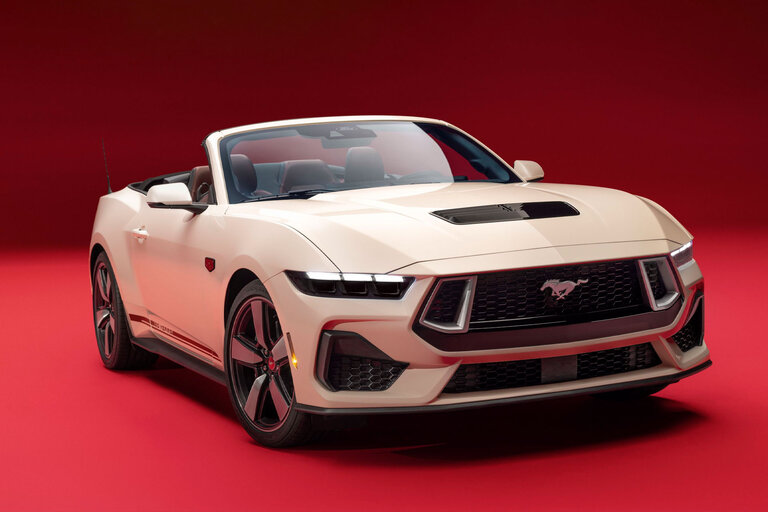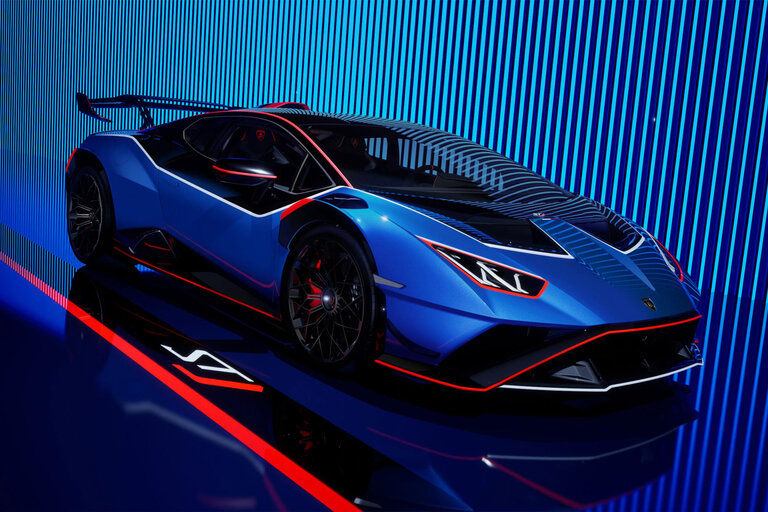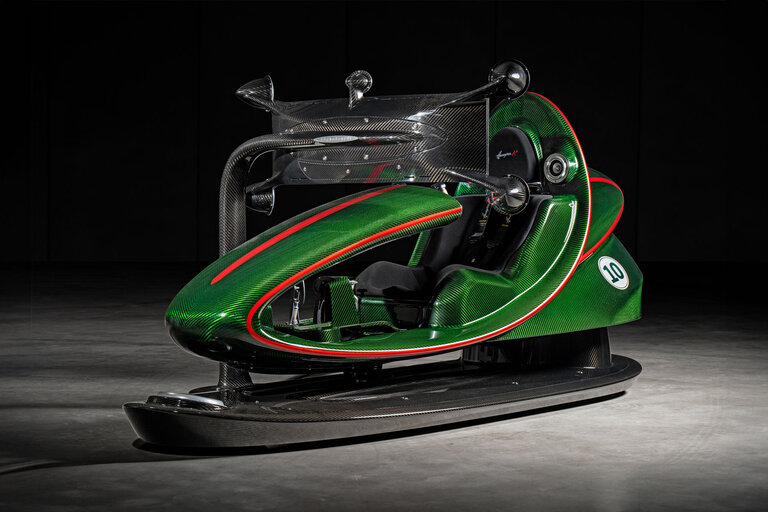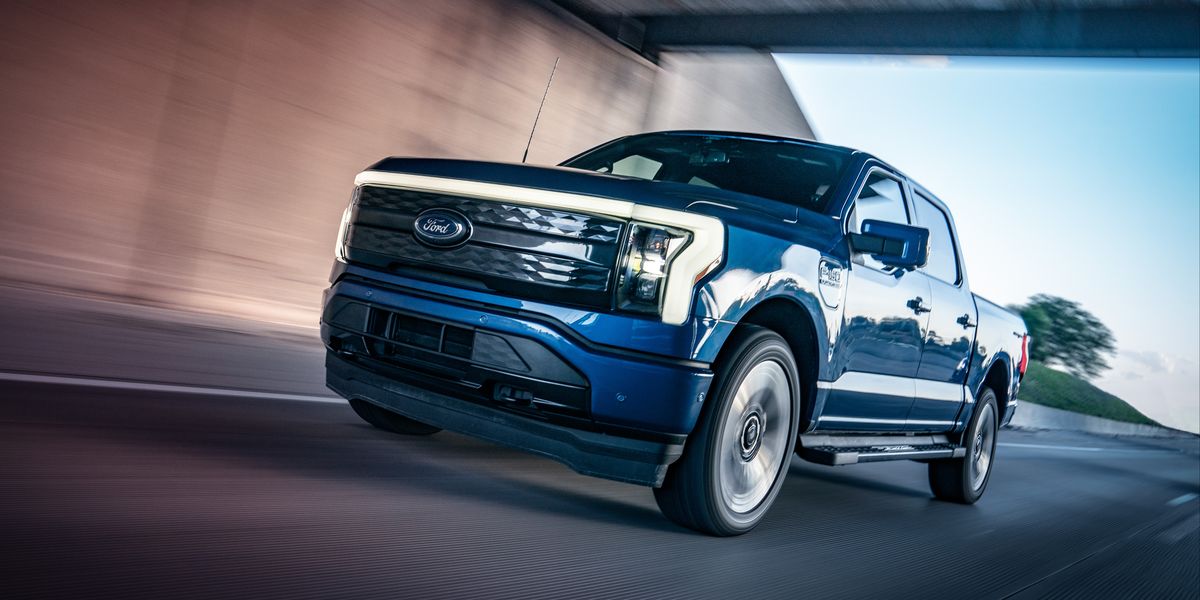
From the July/August 2022 issue of Car and Driver.
It’s almost too simple. Automakers are sprinting full speed ahead toward electric vehicles, and they need offerings that people want to buy. So why not take the bestselling vehicle—the Ford F-150—and make it an EV?
Bingo. Some 200,000 people have queued up to buy Ford’s electric pickup, before they could even see one up close or drive it. That’s 10 times the initial annual volume Ford was planning for the F-150 Lightning. After multiple expansions to its plant in Dearborn, Michigan, Ford will eventually be able to build 150,000 a year.
Are F-150 buyers ready to make the switch to electric? Not exactly, as more than half of reservation holders have never owned a Ford vehicle. These folks won’t appreciate how F-150-familiar the Lightning feels.
All Lightnings have the F-150’s generous four-door crew cab and all-wheel drive with a motor at each axle. As is typical with EVs, peak power is limited by battery output, so the standard 98.0-kWh battery maxes out at 452 horsepower, while the 131.0-kWh upgrade pack increases that to 580 horses. Both versions make a healthy 775 pound-feet of torque.
The starting price is a very reasonable $41,769, but only fleet customers can spec the larger battery pack on the base trim level, so the you-and-me price for a big-battery truck leaps to $74,269. And you really want the big battery. The EPA estimates range of 230 miles for the lesser pack and 320 miles for the larger one, although the top Platinum trim drops to 300 miles because of its 22-inch wheels. In our 75-mph highway range test, the Lightning Platinum went 230 miles. Applying the same ratio to the base battery yields just 176 miles of highway range—and that’s for an empty truck—but it would likely stretch a bit farther because the small-battery model is lighter.
This is despite the Lightning being the most aerodynamic F-150 ever, with its closed-off front grille, underbody panels, and reshaped running boards netting it a 4 percent better coefficient of drag than the regular F-150. Pushing the Lightning along at 75 mph requires 10 percent less power, a substantial decrease.
Maybe part of the appeal is blending in. The Lightning looks like any other F-150. It drives nearly identically to other F-150s, too, even though it gets an independent rear suspension, the first F-150 so equipped. This benefits ride quality in certain circumstances, such as an impact to both rear wheels simultaneously. But mostly the truck feels like any other F-150, with slight imprecision, body-on-frame structural jiggles, and a little floatiness to the ride.
Make that a really, really quick F-150, as the Lightning clears 60 mph in 4.0 seconds on its way to a 12.7-second quarter-mile. The last F-150 Lightning, the one with a supercharged V-8, is more than a second slower in both metrics. A Shelby Mustang GT350 would have to be exceptionally well driven to eke out a narrow quarter-mile victory. A Mach-E GT is no quicker in the quarter-mile.
The power delivery is violent. The Lightning will chirp its front tires when the call comes for maximum acceleration at speeds up to 30 mph. It’s hilarious. Hammer it from rest, and the Lightning often squawks its front tires two or three separate times as the traction control backs off the power, then feeds in too much again. Mixing acceleration and cornering in the Lightning induces torque steer. Fleet buyers can opt to limit maximum acceleration so their derelict employees won’t quickly burn through front tires.
Tire chirps are the primary noise heard during hard acceleration, as the Lightning makes its power and speed almost silently. We measured a peak of 68 decibels during maximum acceleration and just 65 decibels when cruising at 70 mph. That’s significantly quieter than gas-powered F-150s and just one decibel higher while cruising than the last Mercedes S-class we tested.
The competing Rivian R1T steers better, rides better, and is more structurally solid. Though the R1T is considerably more powerful and quicker, its power ramps up more gingerly to avoid wheelspin and torque steer. That allows the Lightning to hang with it in our passing tests, where their 30-to-50-mph and 50-to-70-mph times are within 0.1 second of each other.
The Lightning’s brakes are tuned exceptionally well, with none of the all-too-typical wonkiness when blending motor regen and friction brakes. The Lightning stopped from 70 mph in a reasonable 180 feet, but by the third stop, a warning light came on alerting us to overheating brakes, combined with significant fade and smoke. Despite its extra weight, the Lightning’s front rotors grow by just 0.2 inch in diameter, and the rears are no larger than a regular F-150’s. That would give us pause about exploring the upper reaches of the truck’s 10,000-pound towing capability (Platinums are rated for 8500 pounds). We lugged a 5100-pound trailer, and while the Lightning towed it with alacrity, even this modest load dropped the range to just 130 miles at 70 mph. Realistically, you’d be lucky to go 100 miles between charging stops.
We never thought we’d be impressed by the mass efficiency of something weighing 6855 pounds. But in light of the smaller Rivian R1T that’s 300 pounds heavier and the 9000-pound Hummer EV, here we are. This Lightning, with its 1500-pound battery pack, is roughly 1300 pounds heavier than a gas-powered F-150 but only 74 pounds heavier than a Ram 1500 TRX.
The Rivian R1T has thoughtful features throughout, such as a power-locking tonneau cover, a device to lock gear in the bed, and a roll-out kitchen accessory. Ford, on the other hand, touts just two key features on the Lightning: a large front trunk, which can hold three carry-on bags or two sets of golf clubs, and a total of 11 power outlets in the frunk, cabin, and bed.
Ford calls this generator functionality Pro Power Onboard. It comes with 2.4 kilowatts of output—or 9.6 kilowatts as part of the larger battery upgrade—and is included on the top two trims. The Lightning can also charge other electric vehicles at a decent 7.2 kilowatts. With Ford’s home-charging equipment, the Lightning can power an entire house in the event of an outage. However, getting a home properly set up is a roughly $10,000 proposition, which makes us question how many people will undertake it. These are neat party tricks, but building in so many ways to drain the relatively limited energy stored onboard seems odd. For $4500, you could buy a stationary generator for your house plus a portable one, both of equivalent output to the truck’s. Subtract that cost from the price of the least expensive larger-battery F-150 Lightning, and you’d have about $70,000 left to spend on a pickup.
The F-150’s interior didn’t get any nicer for the Lightning; the hard plastics on the dash and unconvincing leather on the steering wheel aren’t commensurate with the $90,000-plus price of the Platinum. Both the Ram 1500 and the Rivian R1T have much-higher-quality cabin materials. The Lightning also inherits the power-folding shifter that enables a large, flat workspace on top of the center console. But the power mechanism makes for loose, imprecise, and generally unsatisfying shift action.
Is this the best and final answer to the question of what an electric pickup should be? Almost certainly not. But adapting the existing F-150 architecture was a smart way to get an EV pickup to market quickly, and the Lightning has clearly struck a nerve with the buying public. We fully expect Ford’s next electric truck, which will supposedly be ready in 2025, to be more distinctive.
Counterpoints
The F-150 Lightning could’ve been called the Fordtress, as in the Flying Fordtress or the Fordtress of Solitude, given how quiet it is. And it’s quick, despite being saddled with the aerodynamics of a cinder block and a 3.4-ton curb weight. Laugh-inducing launches require nothing more than a right-foot tap that instantly zaps 775 pound-feet of torque to all four wheels, making the Lightning feel like a dragster with a cargo bed. If Fordtress wasn’t the runner-up in the name game, I hope the marketing department at least considered F-1-FiftEV. Thank you, thank you—I’ll be here all week. —Eric Stafford
Ford’s design team missed the dystopian sci-fi movie casting call, and the F-150 Lightning is better for it. Let the electric Chevrolet Silverado, GMC Hummer, Rivian R1T, and Tesla Cybertruck fight for the leading role with their oversize wheels, gimmicky features, and cutesy designs. It’s a smart choice by Ford when you consider that the most popular vehicles don’t cry for attention; they dutifully tackle their responsibilities while looking nonchalant in driveways and on commutes. The F-150 Lightning will blend into a Home Depot parking lot like a master spy. Its performance in the Everyman role is Oscar-worthy. —Carlos Lago
This content is created and maintained by a third party, and imported onto this page to help users provide their email addresses. You may be able to find more information about this and similar content at piano.io
#Ford #F150 #Lightning #Familiar #Brute
Source link




